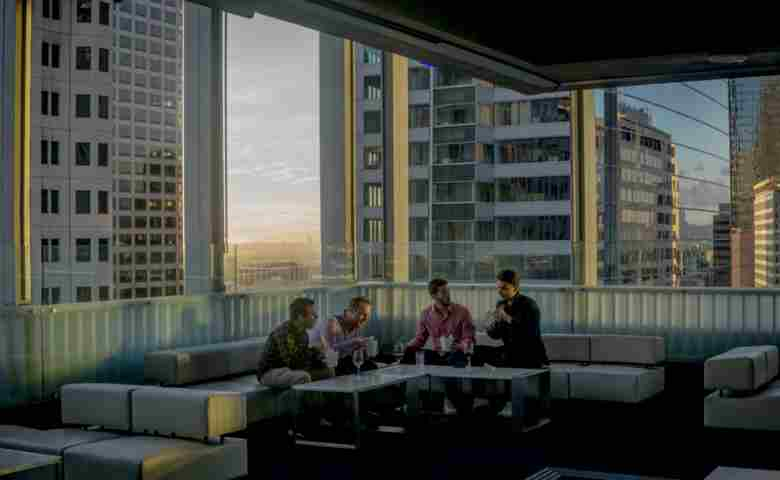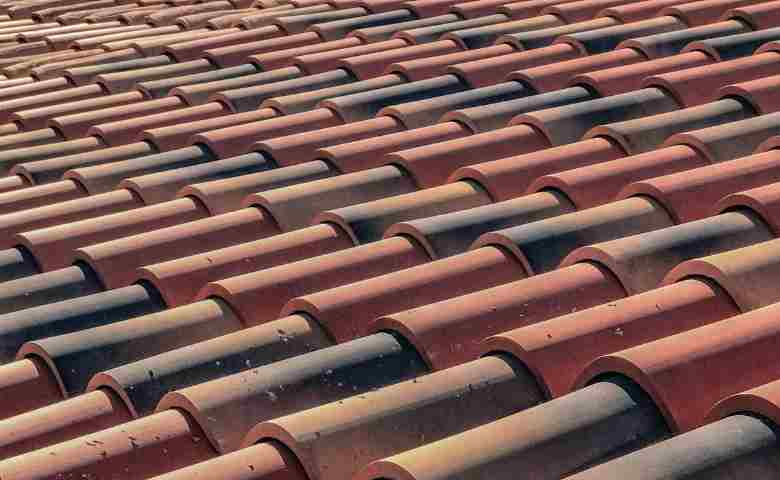Last Updated on July 16, 2024 by Admin
In terms of commercial roof installation, many factors come into play; durability, energy efficiency and cost should all be prioritized as central concerns.
An efficiently designed and maintained commercial roof will add considerable value to a property while protecting occupants from the elements. Regular inspections can detect problems before they become more serious.
Table of Contents
Choosing the Right Contractor
Selecting a contractor is a key part of installing commercial roofs, and selecting an unsuitable professional can result in delays, substandard work and legal issues. To avoid these issues it’s essential that you locate someone with experience installing the type of roofing system you have in mind for your building.
Start by gathering references from past clients, asking about specifics such as project scope and how it was handled. Furthermore, ensure your contractor is licensed and insured – if they cannot produce proof of insurance it may be wiser to seek another service provider.
Once you’ve narrowed down your potential contractors, get detailed estimates from each. Compare them against one another and look for any significant discrepancies; any estimate significantly less than others could indicate cut-corner tactics or attempts at overselling you; request explanations for any significant discrepancies between bids that seem higher or lower;
According to this official document, quality should always take precedence over cost when selecting contractors; however, cost-based selection may be necessary due to financial and profit pressures. When this is necessary, it is crucial that work scopes and material allowances are clearly articulated so any differences in prices are readily understood by both contractor and client.
Once you’ve narrowed down your choices, request a written contract from each candidate. This should include an estimated timeline for work to be performed as well as materials needed and any payments arrangements; those demanding large upfront deposits could be concerned about meeting schedule and budget goals.
As well as technical competence and comfort, your roofing contractor should also have your trust. A trustworthy provider will show consideration towards both your business and investment.
Preparation
Commercial roof installation can be an invaluable asset to a property owner, providing protection from the elements while adding value to their building. A new commercial roof requires more than just covering; its materials must withstand harsh weather conditions as well as frequent foot traffic while being environmentally-friendly and energy efficient. Installation process of a new commercial roof requires careful consideration to ensure its successful completion.
At the outset of any roof replacement process, a professional roofing contractor should conduct an assessment of its current state by inspecting decking, flashing and drainage systems to detect any signs of damage or leaks. You can contact one like https://swcommercialroofing.com/los-angeles-ca or check the yellow pages for someone who can get a sample. A core sample is then taken for analysis to help them decide upon an optimal replacement solution.
Step one is essential in making sure the replacement plan aligns with both the property owner’s budget and project timeline. Failing to do this could result in unexpected expenses or delays that significantly alter overall costs and functionality of roof replacement projects.
At this stage, roofing professionals work alongside architects and engineers to devise effective designs that reflect different building construction methods and material needs. Their goal should be creating designs capable of withstanding natural expansion/contraction without harming nearby areas; also these plans help keep costs and energy costs under control in the long run.
Before beginning installation, it is critical that all debris or obstacles that might hinder a roofing crew are cleared from their work area. Furthermore, all necessary materials and equipment as well as safety precautions must be present at your work area, with pre-installation meetings between roofing contractors, building management, and all involved parties taking place beforehand in order to ensure everyone stays on track with each step of the installation process.
Select a licensed commercial roofing contractor with an established track record for quality and service. A reputable roof replacement provider should offer comprehensive roof replacement plans tailored specifically to each property owner’s budget, along with warranties covering their workmanship and maintenance services that help safeguard investments for years to come.

Installation
No matter whether you are building new commercial property or replacing an existing roof, partnering with a trusted roofing contractor to install or replace it properly and offer optimal protection is of utmost importance.
Achieving this requires extensive knowledge of various roofing materials as well as installation methods tailored specifically for commercial use as well as strict adherence to industry standards – this process should provide your tenants and customers with a safe and functional environment while safeguarding investments and protecting business assets over time.
Prior to beginning a commercial roof installation process, it’s essential that both you and your roofing contractor have an in-depth understanding of its scope and expectations. A reputable roofing contractor should take time to listen carefully and communicate clearly throughout the project, making sure all parties involved stay aligned; this may involve frequent phone calls, emails and meetings between parties involved.
Furthermore, interview potential contractors for insight into their communication style so you feel at ease working together – this might involve multiple interviews before finding one suitable enough.
At the start of commercial roof installation, inspection and evaluation is the initial step. A report will outline any areas of concern as well as provide solutions for replacement or repair and safety protocols to follow for construction sites.
Once the report has been reviewed and approved, construction can commence. Once the roof has been cleared away, new roofing materials will be brought directly to site and installed according to manufacturer specifications and industry standards, ensuring watertight protection against leakage or damage.
Inspection
Regular inspections during construction give contractors an opportunity to identify potential problems before they become costly issues after completion. By taking corrective actions early, contractors can ensure compliance with design specifications, manufacturer warranties, safety guidelines and timelines. Furthermore, inspections help contractors keep project timelines on track for a smooth handover to property owners upon completion.
Furthermore, the contractor will assess membrane integrity; inspect flashings for wear; check penetrations such as vents and skylights for penetrations like vents or skylights; review drainage system to look for areas of ponding water; evaluate drainage system with respect to areas that might have been impacted by wind damage or where components such as HVAC equipment have been placed; evaluate perimeter of roof.
If necessary, contractors may also perform a more in-depth roof examination using various methods – core samples and moisture meters may be utilized in order to detect hidden water damage; camera drones can provide a more comprehensive view of all roof surfaces.
Once complete, the contractor will present the property owner with a comprehensive report outlining their findings and recommended solutions and costs of repair or replacement, along with a maintenance schedule to prevent future problems. By outlining both existing and potential issues in their report, this allows property owners to devise an action plan for their commercial roofing system.

Maintenance and Long-Term Sustainability
Maintenance plays a crucial role in the longevity and performance of commercial roofing systems. Once the installation is complete, ongoing maintenance schedules should be established to ensure the roof continues to function effectively over its lifespan. Regular inspections, typically conducted semi-annually or after severe weather events, help identify and address any issues promptly before they escalate into more significant problems.
During these inspections, contractors thoroughly examine various aspects of the roof. They assess the integrity of the roofing membrane, inspect flashings for signs of wear or deterioration, and check penetrations such as vents and skylights to ensure they remain watertight.
The drainage system is also scrutinized to detect any areas prone to ponding water, which can lead to structural damage and leaks if not addressed promptly. Additionally, contractors evaluate the roof’s perimeter and its interface with other building components, ensuring that all transitions are properly sealed and maintained.
In some cases, more advanced inspection techniques may be employed. Core samples and moisture meters are utilized to detect hidden moisture within the roofing materials, providing insights into potential areas of concern that may not be visible from the surface. Camera drones are increasingly used to conduct comprehensive aerial surveys, offering detailed views of the entire roof and facilitating more accurate assessments.
Based on the findings from these inspections, contractors provide property owners with detailed reports outlining any identified issues and recommended solutions. This proactive approach allows property owners to address maintenance needs promptly, preventing minor problems from escalating into costly repairs or premature roof replacements.
Furthermore, a well-maintained roof contributes to the overall sustainability of the building. Energy-efficient roofing materials like these and proper insulation help reduce heating and cooling costs, enhancing the building’s energy performance and environmental footprint. By choosing sustainable roofing solutions and implementing regular maintenance practices, property owners can achieve long-term cost savings while minimizing their impact on the environment.
Ultimately, investing in proper installation and ongoing maintenance of commercial roofs is essential for maximizing their lifespan and protecting the building occupants and assets. A proactive approach to roof maintenance not only ensures regulatory compliance and safety but also enhances the property’s value and operational efficiency.
By partnering with experienced roofing professionals and adhering to industry best practices, property owners can safeguard their investments and maintain a safe and functional environment for tenants and customers alike.
Related Posts:
- The Best Roofing Contractors for Your Home: A Comprehensive Guide
- Cutting-Edge Roofing Solutions for the Modern Era
- Global Megaprojects: California High Speed Rail
- Construction and Roofing Techniques: Achieving Sustainability and Efficiency
- Enhancing Home Value: Window Replacement Trends in Bethlehem


